Chrissy (Koch) Downwind M’17 admits she doesn’t sugarcoat. “When I introduce myself, I usually include the fact that I don’t have a filter,” she says with a laugh.
So when Downwind is asked how women go about breaking glass ceilings in their workplaces, she simply says, “Walk around with a big hammer.”
Downwind, who is Ojibwa and Lakota, shattered one glass ceiling after she was named vice president for American Indian student success and campus diversity officer for Bemidji State University (BSU) and Northwest Technical College (NTC) in April 2023.
She became the first American Indian woman to hold a vice president position at a four-year university campus for the Minnesota State system of colleges and universities. In her previous role as executive director of the American Indian Resource Center for both BSU and NTC, she was also the first woman to hold that position.
“As a marginalized woman working in a male gender-based role, I’m not quiet,” she says. As an advocate for her students, she can’t be.
Downwind believes she got a lot of her spirit from her father, and the work that she’s doing is a continuation of the legacy he started.
“Through and through, I’m a daddy’s girl,” she said. “Dad lived a pretty rough lifestyle until I was born, and then he decided, when I was in the third grade and he was in his 40s, that he was going to change the trajectory of how life looked for my family and go back to college.”
It wasn’t easy. Downwind said she remembers watching him struggle to raise his family, work full time, and go to school. “I not only watched my dad get his degrees but also start working for St. Cloud State. I watched him pioneer his way through the MNSCU system (at that time) to be the founder for the American Indian Center at St. Cloud State.” Though her father suffered from medical conditions and could not continue his work, a seed was planted in Downwind when she was young to help others.
After she got her bachelor’s degree, she began working in a K-12 setting. “I was making a difference and I loved working with my students,” she said. “My students consisted of high-need traumatized, marginalized students in a public school setting. I connected with them and loved my work.”
She never considered leaving that position and working in higher education. In fact, Downwind said the main reason she came to enroll at Saint Mary’s Master of Arts in Educational Leadership was almost entirely because she was dared by a friend.
“I don’t back out of a challenge,” she said, admitting that 13 years after getting her bachelor’s degree, she wasn’t sure she had made the right decision. Online education was completely new territory.
Yet, Downwind said she received the support she needed to be successful. “The faculty were so open and willing to help,” she said. “I have nothing but love for Saint Mary’s and what it did for me, giving me the energy and the knowledge I needed to continue moving forward. It was so easy and so smooth, and to have that in an institution, especially when you do it online … To this day, I recommend Saint Mary’s. I owe a lot to Saint Mary’s for where I am today.”
It was her cohorts who first suggested she move into higher education. Downwind said she associated higher education with people in suits, speaking academic jargon, and usually uptight.
“I figured, that’s not me,” she said. “And I wasn’t going to change myself to fulfill that narrative.”
But when Downwind felt her current job in public schools was going stagnant, and a position opened at the American Indian Center at BSU, she applied and was hired in July 2019. In her second week, her superior, the executive director of the center resigned, and Downwind instinctively picked up the slack. Because she showed such initiative, she was encouraged by several at BSU to apply for the executive director position.
“I never saw myself in that leadership role,” she said. “I didn’t have that confidence to move forward without a nudge. A lot more people had confidence in me than I did in myself.”
During this same timeframe, BSU was facing a crisis with hate crimes and racial speech. “Our students didn’t feel safe and like their voices weren’t being heard,” she said. “When those students came to me, I saw the despair on their faces. As a marginalized woman, I grew up in a society where I fought all of those things.
“I was an alumna of BSU 20 years ago, and I faced and dealt with the same marginalized oppression and racial discrimination that our students face today,” she said.
In her short tenure, Downwind and her team have grown American Indian enrollment from a low of just over 200 students to 430. Now, they are focused on retention.
She also is running the Nisidotaading (pronounced “nisi-do-tah-ding”) program for the Minnesota State chancellor’s office, housed at BSU. This initiative, named for an Ojibwe phrase which means “having a mutual understanding,” will help to ensure that BSU students across all disciplines graduate with an opportunity to develop an understanding of Indigenous peoples and cultures and the issues they face.
Her goal is to provide culturally fluent professional development and training for faculty and staff, first at BSU and then across the Minnesota State System. “We’re changing the future. I feel like my father’s work has come full circle,” she said.
Downwind is proud that her sons, and now her granddaughter, are seeing their mom and grandmother break barriers. “I don’t want my granddaughter to experience the same issues (as a woman and as an American Indian) that I did,” she said. “Women look at things like a mother, seeing how things are affecting students. As caregivers, it’s inherent. When women empower one another, those ceilings are going to start shattering.”
Photo by Eric Sorenson


